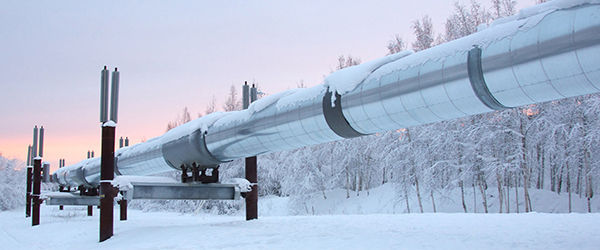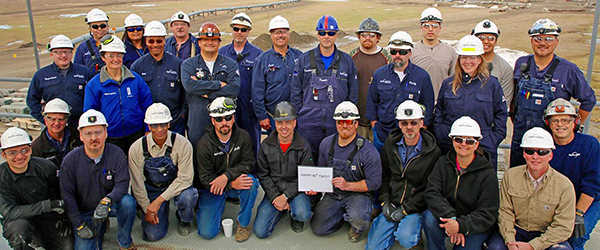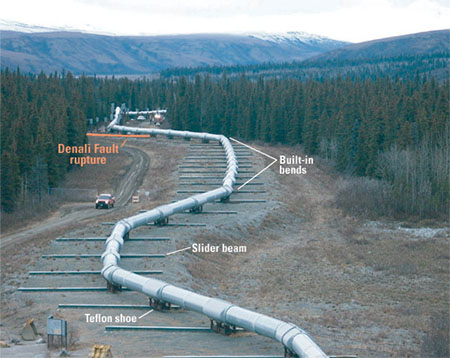
TAPS Design
Design magnitude
TAPS is seismically designed to survive earthquakes without damage or leakage. It is engineered to withstand a maximum magnitude 8.0 earthquake around the Denali Fault and between a 5.5 and 8.5 magnitude earthquake, depending on the area.
Design movement
Maximum movement of pipe at pipeline crossing of major faults:
- Denali Fault: 20 feet lateral, 5 feet vertical.
- McGinnis Glacier Fault: 8 feet lateral, 6 feet vertical.
- Donnelly Dome Fault: 3 feet lateral, 10 feet vertical.
- Minor Potential Faults: 2 feet lateral, 2 feet vertical.
Zigzag Configuration
Aboveground sections of the pipeline are built in a zigzag configuration to allow for expansion or contraction of the pipe because of temperature changes. The design also allows for pipeline movement caused by an earthquake.
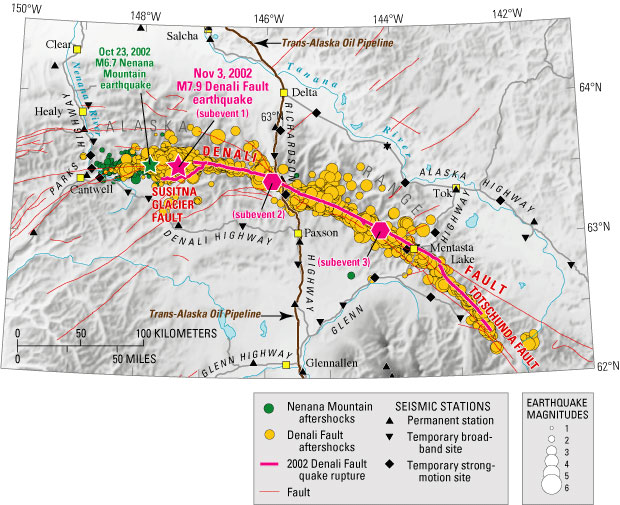
Earthquake events
Denali Fault, November 3, 2002
The pipeline withstood a magnitude 7.9 earthquake that was centered along the Denali Fault in Interior Alaska. The ground along the fault moved an estimated 18 feet horizontally and nearly 2.5 feet vertically below TAPS without inflicting any significant damage. The quake was the largest on the Denali Fault since at least 1912 and among the strongest earthquakes recorded in North America in the last 100 years.
November 30, 2018
A magnitude 7.0 earthquake struck north of Anchorage on November 30, 2018. There was no damage to TAPS.
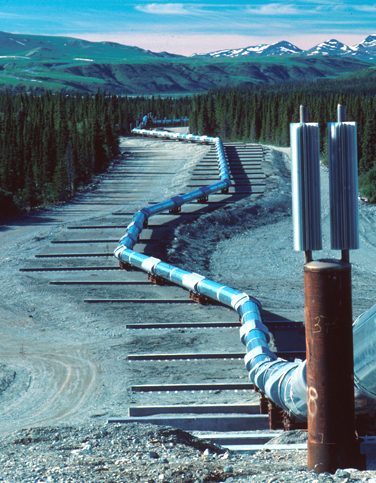
Misc.
Faults crossed by TAPS
Denali, McGinnis Glacier and Donnelly Dome
Monitoring
Seismograph instrumentation is installed at field locations consisting of accelerometers that measure earthquake ground motions. This data is continuously monitored at the Operations Control Center and automatic alerts are issued if a significant earthquake is detected.
Seismic Design Pioneer
TAPS was the first pipeline in the U.S. which was designed to cross a major seismic fault without damage. Today, it continues to be an industry leader in earthquake response planning.
